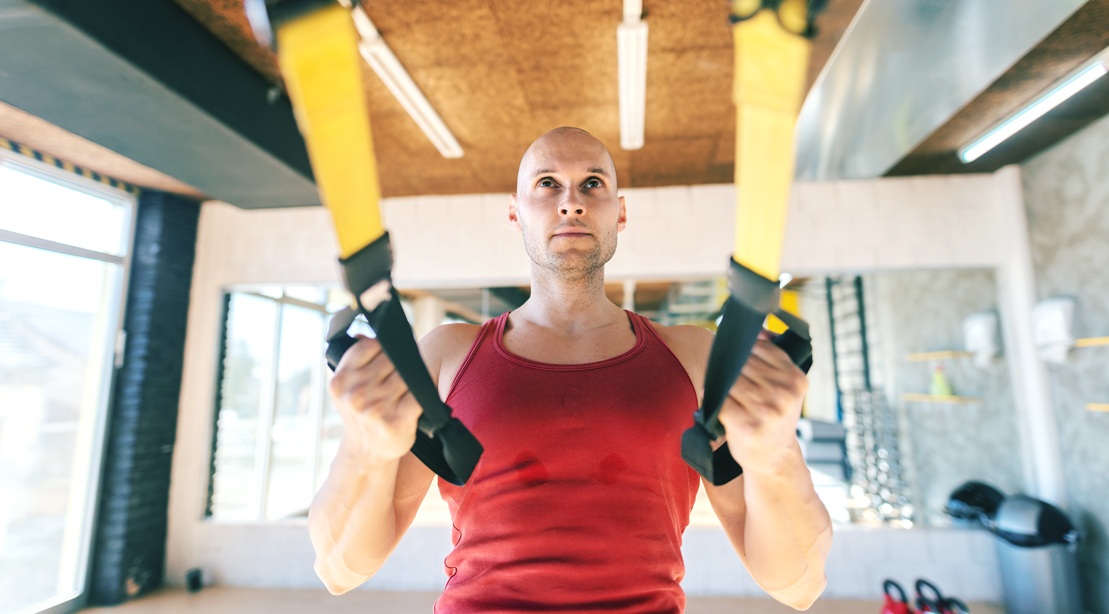Ever since former Navy SEAL Randy Hetrick created his vision out of a jiu-jitsu belt and parachute webbing, suspension trainers like the TRX have become commonplace in gyms and homes worldwide. It’s convenience—an entire gym in a bag—arguably created the fitness phenomenon of taking your workout anywhere you go, thereby eliminating any excuses for not training.
The biggest knock against suspension training is that it will not get any stronger after a certain point because you only use body weight, leverage, and gravity. But if you use suspension training as part of your accessory routine, you can strengthen your weakness and add volume to body parts that need work.
Here are four suspension trainer exercises you should consider adding to your routine if your goal is to keep getting stronger.
Benefits of Suspension Trainer Exercises
There are some exercise equipment tools you must go to college to know how to use them. Suspension training is not one of those tools. The beauty of suspension training is that everyone can benefit from it, from beginner to advanced. Here are some benefits.
- Accessible To All Fitness Levels: The beauty of suspension training is that bodyweight exercises like push-ups and rows are progressed or regressed by where you place your feet. The closer your feet are to the anchor point, the more you lift your body weight; the further away from the anchor point, the less of your body weight.
- Versatile and Easily Transferable: Like many other exercise tools, suspension training is versatile, and your imagination only limits you regarding the number of exercises you can do or come up with. But with suspension trainers, you can train with your hands and feet in the straps and strengthen your body from various angles. Plus, being portable, you can set it up at home or take it outside and wrap it around a tree.
- Rock Solid Core Strength: Exercise tools like barbells and exercise machines lock you into a specific range of motion, which is one reason you can lift more weight with them because you have stability. Not so with suspension training. Suspension training is inherently unstable, and each rep differs from the next. That’s why most exercises performed with a suspension trainer require you to brace and stabilize your core to leverage your body weight as resistance better.
- Builds Real World Strength, and Power: With the number of exercises you can perform on a suspension trainer, many have a direct carryover with your activities of daily living—for instance, twisting, pulling (power row), and pushing ( the suspension trainer push-up). Plus, it can help you with your sport. The Journal of Education and Training Studies got 20 volunteer basketball players and separated them into control and experimental groups. The control group followed their training for six weeks, keeping track of their measurements. Then they introduced suspension training twice a week to the other group for six weeks. After six weeks, these elite-level basketball players improved their jump height, strength, and agility compared to the control group.
- Great Accessory Tool: You will not build absolute strength with suspension training because adding load to some exercises is complex and may mess it up. But you can still improve your relative strength just by adjusting your intensity with the position of your feet. Performing suspension training as an accessory tool will improve core and upper back strength and strengthen imbalances if they exist.
Top 4 Suspension Trainer Exercises
Here are four suspension training exercises that will improve your core strength and movement to help to take your overall strength to a new level.
